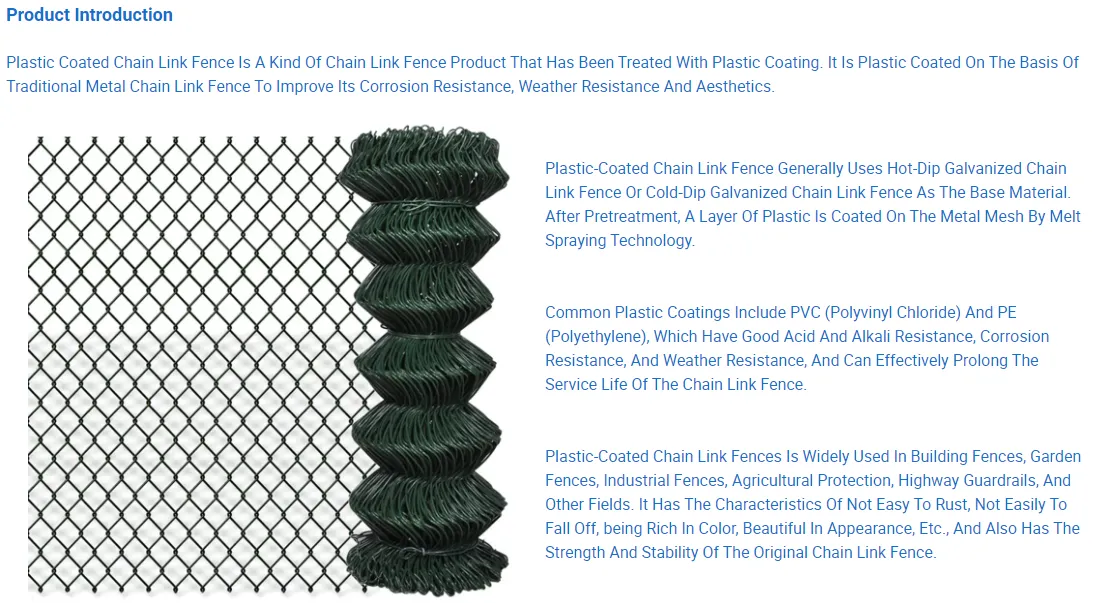The Importance of Anti-Wind Nets in Modern Agriculture
In recent years, the agricultural landscape has dramatically changed due to advancements in technology and changing climatic conditions. One essential innovation that has gained attention is the use of anti-wind nets. These nets serve a crucial purpose in protecting crops and enhancing agricultural productivity. In this article, we will explore the significance of anti-wind nets, their benefits, and their applications in modern farming.
Understanding Anti-Wind Nets
Anti-wind nets are specialized mesh fabrics designed to minimize the impact of strong winds on crop fields. They are typically made from durable materials such as polyethylene or polypropylene and come in various mesh sizes to cater to different agricultural needs. The primary function of these nets is to act as a physical barrier, reducing wind speed and preventing damage to crops from turbulence and strong gusts.
As climate change leads to more unpredictable weather patterns, including increased wind speeds in some regions, the use of anti-wind nets has become increasingly relevant. Farmers are seeking innovative solutions to protect their crops from wind-related damage, and these nets offer an effective approach to achieving that goal.
Benefits of Anti-Wind Nets
The benefits of anti-wind nets extend far beyond merely shielding crops from the wind. Here are some key advantages
1. Crop Protection The most obvious benefit is the protection against physical damage. Wind can cause plants to break, uproot, and lead to significant yield loss. By reducing wind speed, anti-wind nets minimize these risks, allowing crops to thrive.
2. Microclimate Creation These nets not only protect against direct wind damage but also help in creating a more favorable microclimate for plants. The reduced windspeed can lead to less water loss through evaporation, maintaining soil moisture levels and benefiting crop health.
anti wind net

3. Erosion Prevention Strong winds can lead to soil erosion, which is detrimental to agricultural productivity. By using anti-wind nets, farmers can help stabilize the soil and reduce the loss of topsoil, which is vital for healthy plant growth.
4. Cost-Effective Solution Although the initial investment in anti-wind nets may seem significant, the long-term savings from preventing crop loss and maintaining soil health are substantial. Farmers can achieve higher yields and better quality produce, ultimately resulting in increased profitability.
5. Versatile Applications Anti-wind nets are versatile and can be used in various agricultural settings, including vineyards, orchards, and vegetable fields. Their adaptability makes them suitable for different crops and geographical conditions.
Implementation and Best Practices
To maximize the effectiveness of anti-wind nets, farmers should consider several best practices. First, proper installation is crucial. Nets must be anchored securely to withstand high wind speeds and ensure they don't become a hazard themselves. Additionally, selecting the right mesh size is vital; a finer mesh may be more effective in reducing wind speed but could also impede sunlight or rainfall.
Monitoring the condition of the nets over time is also essential. Regular inspections will help identify any tears or damage that could compromise their effectiveness. If the nets show signs of wear, timely repairs or replacements can ensure ongoing protection for crops.
Conclusion
In conclusion, anti-wind nets are a valuable tool in modern agriculture, particularly in an era of increasing climate volatility. Their ability to protect crops, create a favorable microclimate, and prevent soil erosion makes them an essential asset for farmers aiming to enhance productivity and sustainability. As the agricultural sector continues to adapt to the challenges posed by climate change, the adoption of innovative solutions like anti-wind nets will play a pivotal role in safeguarding the future of farming. By investing in these technologies, farmers can not only protect their livelihoods but also contribute to a more resilient and sustainable global food system.
-
Why Galvanized Trench Cover Steel Grating Resists Corrosion
NewsJul.10,2025
-
The Versatility and Strength of Stainless Expanded Metal Mesh
NewsJul.10,2025
-
Load Calculations in Steel Grating Platforms
NewsJul.10,2025
-
Keeping Pets and Kids Safe with Chicken Wire Deck Railing
NewsJul.10,2025
-
Hole Diameter and Pitch for Round Perforated Metal Sheets
NewsJul.10,2025
-
Aluminium Diamond Mesh in Modern Architecture
NewsJul.10,2025
Subscribe now!
Stay up to date with the latest on Fry Steeland industry news.

